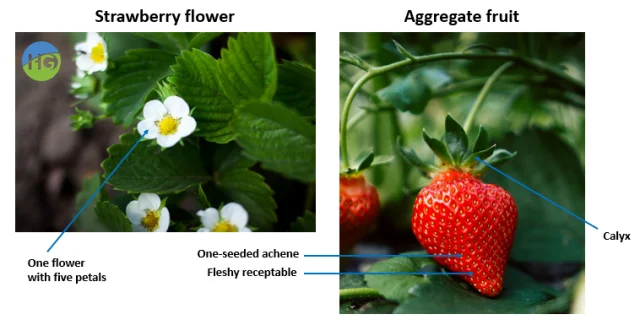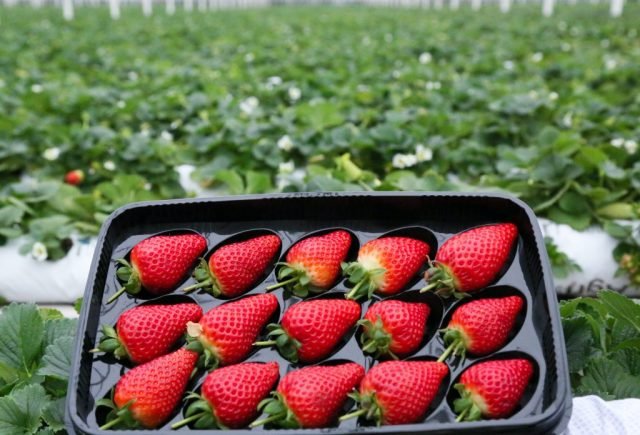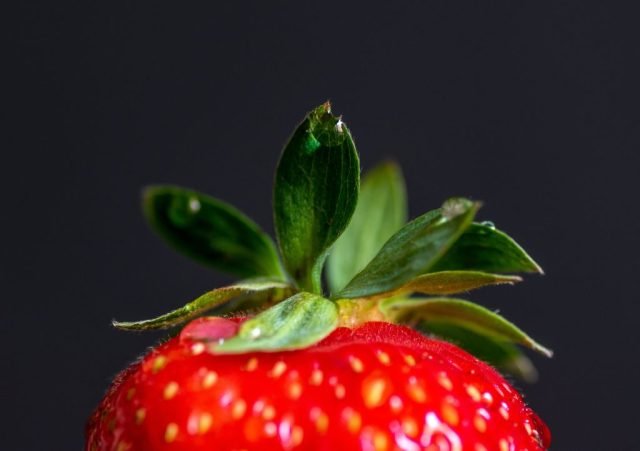By Corenthin Chassouant, originally published by Horti Generation
Introduction
Strawberries (genus Fragaria) are one of the most important fruit crops in the world. In North America, California and Florida are the largest producers. In Canada, the Quebec province stands out with a growing production in recent years. In France, half of the strawberries are now produced in soilless culture (Ancay, 2010; Izard, 2017).
In recent years, soilless hydroponic strawberry cultivation in greenhouses has gained popularity. In fact, there are many reasons for this: reduction of root diseases by using sterile soil, increase in yield per unit of production, improvement in working conditions – planting, maintenance, easier harvesting – and fruit quality, better use of spaces unsuitable for agriculture, optimization of water and fertilizers, extension of the growing season, etc. (Izard, 2017).
Nowadays, strawberries are grown all year round in greenhouses to meet the consumers demand outside the summer season.
In this article, we will see a brief description of the vegetal physiology of strawberries and then the ideal growing conditions of the plant. To finish, the article will present the different possible systems of culture and the advantages of producing strawberries in a greenhouse.
Plant description
Strawberries are very low-stemmed plants in the Rosaceae family. The leaves are toothed (serrated) with white flowers composed of five petals and which produces strawberries.
The fruit is formed by the whole fleshy receptacle of the flower. The strawberry has a red or whitish yellow color depending on the variety, and an ovoid stadium shape more or less rounded.

Each strawberry is produced from a single white flower bearing many stamens. The achenes are actually the “real” fruits botanically speaking.
The strawberry plant reproduces naturally by runners (or stolons). These are aerial stems that grow from the “mother” plant and take root at the nodes to give new plants. If the growing conditions are optimal a single plant can produce between 30 and 50 runners, depending on the vigor and qualities of the variety.
Sexual reproduction is possible but not frequent. It is used to create new varieties.
Growing conditions
The climatic conditions in the greenhouse depend on the types and varieties of strawberries. In this section, we will see some general data extracted various scientific publications.
– Temperature
To grow strawberries in greenhouses it is important to have an efficient heating system. Indeed, the strawberry plants will be able to bear fruit all year long. The greenhouse can be operated in optimal conditions even during the winter.
In order to ensure a good balance between the vegetative phase and the production of fruits, it is necessary to be able to manage the temperature between 10°C (50°F) and 22°C (72°F) in the growing area. In fact, a too high temperature (> 25 °C or 77°F) , especially at night, will have a major influence on the emergence of the flowers and the ripening of the fruit.
In a greenhouse, one of the important principles is to have a gradual increase in temperature when dormancy is lifted. In general, the temperature is increased from 8°C (46°F) and 16°C (61°F) over a period of about four weeks in order to develop a minimum leaf mass before stimulating a flowering.
At the time of flowering, the temperature must be maintained between 16°C (61°F) and 20°C (68°F) to ensure a good viability of the pollen keeping a level of humidity favorable to pollination.
After the fruits appear, the temperatures must be lowered around 15°C (59°F) to ensure a slow and uniform maturation of the fruits.
– Humidity (RH) %
Relative humidity (RH) management plays a major role in the production of strawberries in greenhouses. The relative humidity must be high (>90%) at certain stages of cultivation such as he vegetative phase especially at night to avoid marginal necrosis (browning on the edges).
However, during the day the RH must be maintained at about 70-75% to avoid the appearance of fungal diseases such as botrytis or insects and allow the plant to grow (plant transpiration during photosynthesis).
Passive and active ventilation as well as fogging will ensure optimal conditions in the greenhouse.

– Light
Light is essential for the cultivation of strawberries, especially for the vegetative phase and the initiation of flowering (floral induction). Indeed, the change of photoperiod will be a signal for the plant to start producing flowers.
More and more strawberry growers are talking about an average light intensity of 200 µmol/m-2/s-1 (instead f 160-180 µmol/m-2/s-1). Those light levels are closer to more demanding crops like tomatoes and peppers.
In order to reach the new light intensity targets, part of the of growers “new generation” are also using LED (spectrum specific) to be able to have complementary light helping during the vegetative phase and floral induction.
– Irrigation
If we take as an example a system with fixed suspended gutter spaced 1.14m (3’8″) apart :
- 6 to 8 plants / bag of 8 liters (or 2,1 gal)→ 1 to 1.25 liters (0,26 to 0,33 gal) of substrate / bag
- Crop density of 12 to 14 plants / m2
- 2 drippers / bag → 2 liters (0,53 gal) / hour / drip
- Standard irrigation: 100 ml (3,38 floz) /irrigation
Types of hydroponic system
We will focus on this section on the different suspended gutter systems which can be install in a modern greenhouses to grow soilless strawberry year-round.
– Fixed suspended gutter system
(Video in French)https://www.youtube.com/embed/Nx_3lJp5cNI?start=41&feature=oembed
– Swinging suspended gutter system
(Video in English)https://www.youtube.com/embed/q1U7FS2xif8?start=5&feature=oembed
– Lifting suspended gutter system
(Video in English)https://www.youtube.com/embed/q3XUXH76YBE?start=28&feature=oembed
Advantages of growing strawberries in greenhouses
Below is a summary of the advantages of producing strawberries in greenhouses compared to conventional open field cultivation.
- Possibility to produce without pesticides thanks to the protection of nets and biological integrated control in the greenhouse (better efficiency)
- Superior yield (crop density, up to 15 kg / m2) and quality (insect and disease control + accurate climate management)
- Optimization of labor and reduction of effort (during pruning and harvesting) with cultivation gutters at workers’ height
- Reduction and recycling of inputs and limitation of environmental impact
- Water consumption decrease
- Extension of the production season (year-round)
- Local production close to the consumers (no need to import from oversea during the winter in some locations)

Conclusion
Strawberry production is not simple, it is a demanding crop that requires specific technical support.
However, the growth perspectives are important for this crop. Demand for strawberries is growing worldwide at all times of the year. In addition, consumers are increasingly sensitive to transparency and traceability in order to consume organic products without pesticides.
For these reasons, the production of strawberries in greenhouses with modern technologies is a real solution and should have a bright future.
Sources:
Ancay, A., F. Fremin, et P. Sigg. (2010). Fraisiers sur substrat : quelles alternatives à la tourbe ?
Revue suisse Viticulture, Arboriculture, Horticulture, 42(2) :106–113.
Growing strawberries in greenhouses (OMAFRA):
https://www.omafra.gov.on.ca/english/crops/hort/news/allontario/ao0513a1.htm
Izard, D. (2017). La fraise hors sol sous abris froids. Récupéré de à https://gfol1.fruitsplus.net/
download/5-La_fraise_hors_sol_froid_ws1037484763.pdf
La culture des fraises en serre (CIDES, 2000):
https://www.cawjijel.org/images/guide_deculture_fraise.pdf
La production de fraises hors-sol est-elle faite pour vous ?
https://www.agrireseau.net/documents/92133/la-production-de-fraises-hors-sol-est-ce-pour-vous?a=1&r=fraises+serre
Optimisation de la production hors-sol de fraise à jours neutres sous abris (Université Laval, 2017):
https://corpus.ulaval.ca/jspui/bitstream/20.500.11794/27643/1/33157.pdf
Profil de la culture de la fraise au Canada (Agri-Food Canda, 2005) :
https://www.agrireseau.net/petitsfruits/documents/Profil_culture_fraise_Canada_2005F.pdf











